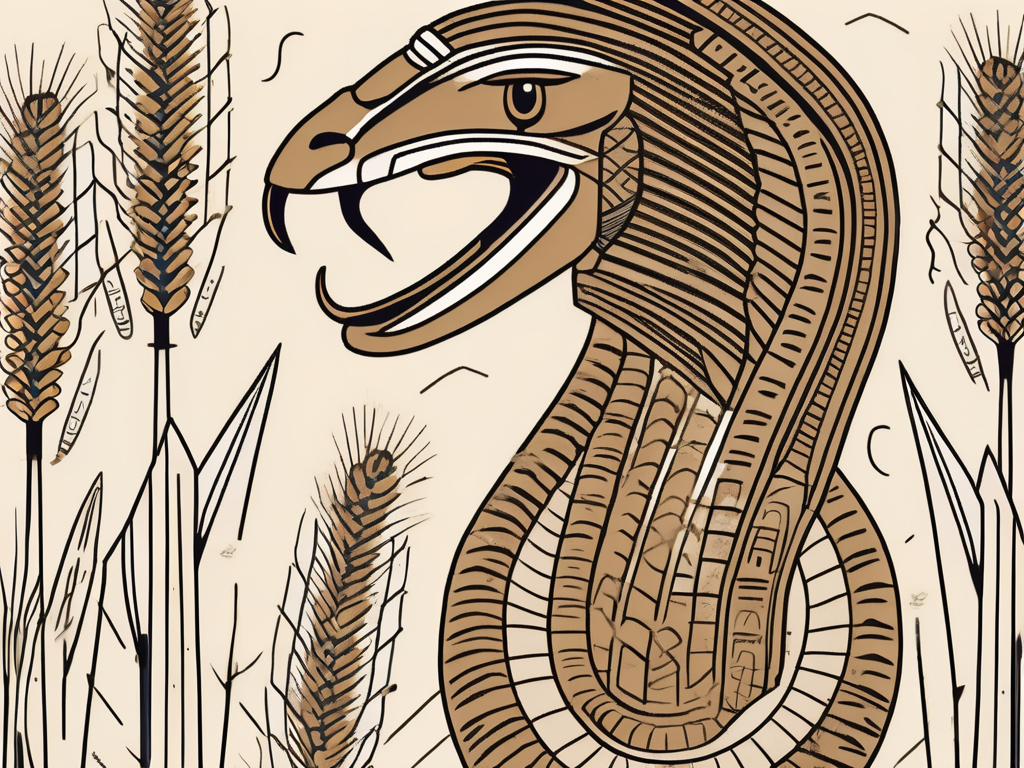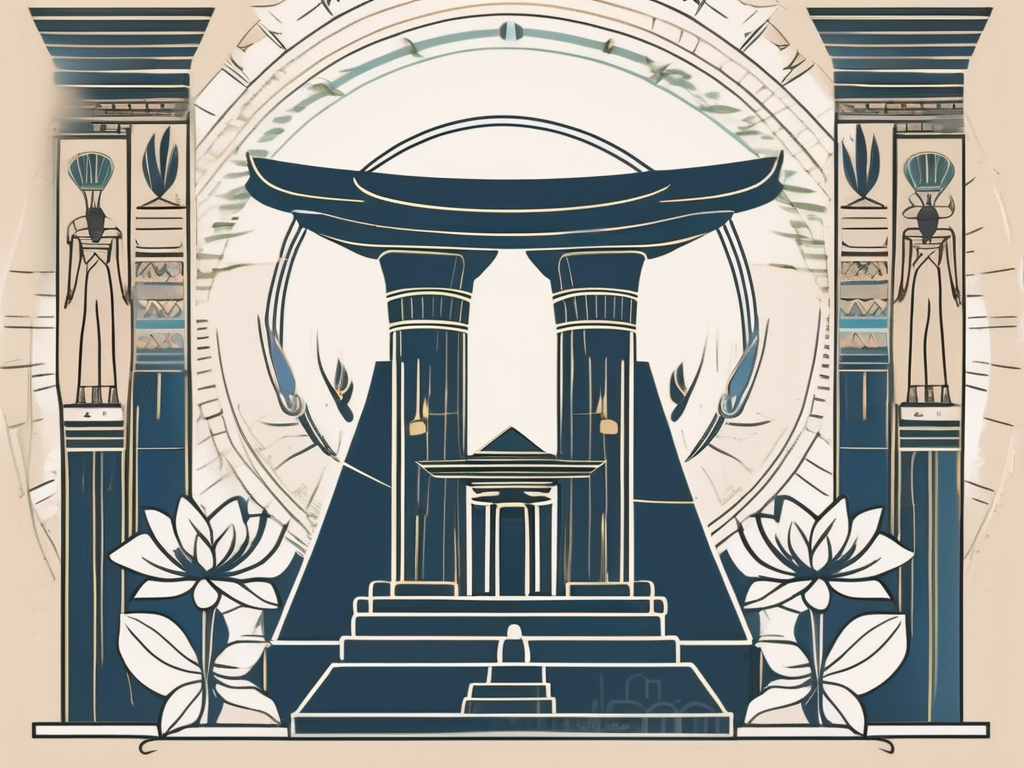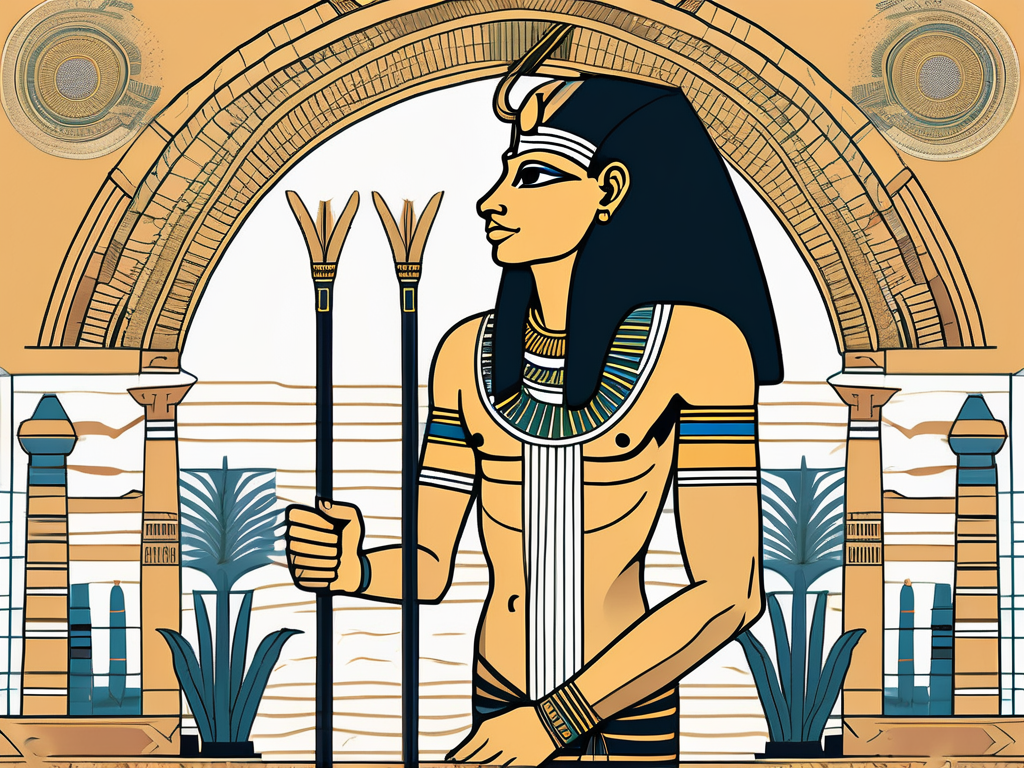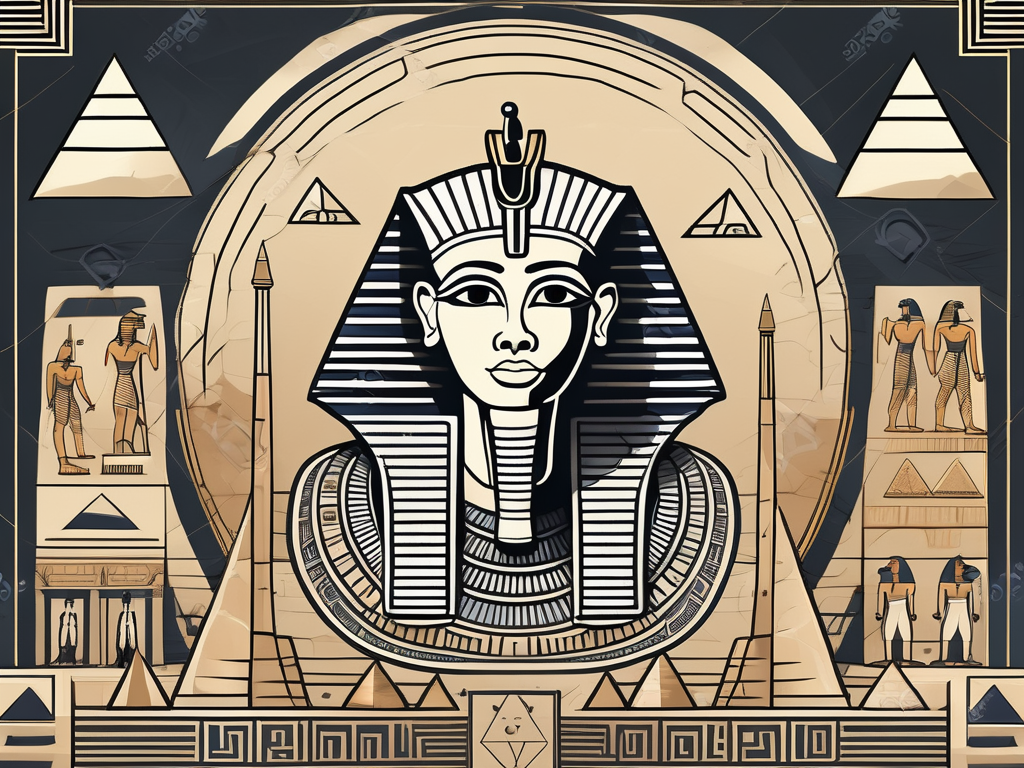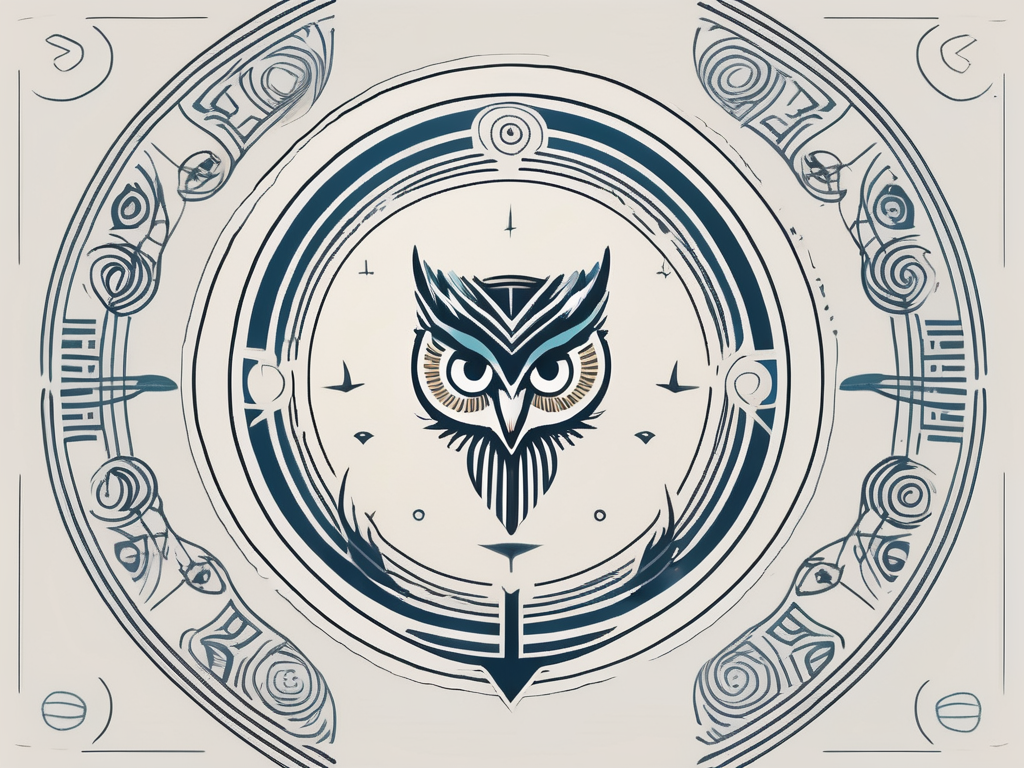Ancient Egyptian religion is shrouded in mystery, with many gods and goddesses occupying the pantheon. One deity that stands out is Renenutet, a highly revered goddess associated with fertility, agriculture, and the harvest. In this article, we will delve into the fascinating world of Renenutet, exploring her role in ancient Egyptian religion, her iconography and symbolism, her myths and legends, as well as her lasting legacy in modern times.
Understanding the Role of Renenutet in Ancient Egyptian Religion
Renenutet held a significant position in the ancient Egyptian religious belief system, playing a vital role in ensuring the success of agriculture and the abundance of the harvest. As the goddess of fertility, she was revered for her ability to bless and protect both crops and the animals that sustained the Egyptian civilization.
To the ancient Egyptians, Renenutet was a symbol of the cycle of life and death, as well as the circle of fertility and abundance. She was believed to bring prosperity and ensure the continuous flow of life-giving resources.
Renenutet’s influence extended beyond her symbolic representation. She was a goddess who actively participated in the lives of the ancient Egyptians, guiding them through the agricultural seasons and ensuring the well-being of their crops and livestock.
The Symbolism of Renenutet
Renenutet was most commonly depicted as a cobra or as a woman with the head of a snake. The cobra symbolized her protective nature and her ability to ward off evil forces that threatened the harvest.
In Egyptian art, Renenutet often appeared alongside other deities, emphasizing her close connection to the divine realm. She was sometimes depicted holding an ankh, the Egyptian symbol of life, further reinforcing her role as a giver of life and sustenance.
Her depiction as a cobra also held deeper symbolism. The cobra was associated with the sun god, Ra, and the power of the sun to bring life and growth. Renenutet’s association with the cobra highlighted her role as a guardian of the agricultural cycle, ensuring the sun’s life-giving energy reached the crops.
Renenutet’s Influence on Agriculture and Harvest
The ancient Egyptians heavily relied on agriculture for their survival, and Renenutet played a crucial role in ensuring the productivity of their crops. Farmers would invoke her name and offer prayers and sacrifices to gain her favor and protection.
According to ancient Egyptian beliefs, Renenutet controlled the Nile’s annual flooding, which replenished the fields with rich alluvial soil. The Nile’s flooding was seen as a direct manifestation of Renenutet’s will, and her blessings were necessary for a successful harvest.
But Renenutet’s influence on agriculture went beyond the Nile’s flooding. She was also associated with the act of sowing seeds and the growth of plants. Ancient Egyptians believed that she oversaw the germination process, ensuring that the seeds sprouted and grew into healthy crops.
Renenutet’s association with bountiful harvests extended to the animal kingdom as well. She was believed to protect livestock and ensure their fertility, guaranteeing a steady supply of food for the Egyptian people.
Her role as a fertility goddess was not limited to crops and animals alone. Renenutet was also believed to bless human fertility, ensuring the continuation of the Egyptian civilization through the birth of healthy children.
As the goddess of fertility, Renenutet was also associated with the concept of rebirth and regeneration. Just as the crops would wither and die during the dry season, only to be reborn with the return of the Nile’s flooding, Renenutet represented the cyclical nature of life and the promise of renewal.
The ancient Egyptians held Renenutet in high regard, recognizing her as a powerful and benevolent deity who played a crucial role in their everyday lives. Her presence in their religious beliefs and practices brought comfort and assurance, knowing that their agricultural endeavors were protected and blessed by the goddess of fertility herself.
The Iconography of Renenutet
The artistic representation of Renenutet offers a glimpse into the significance of this goddess in ancient Egyptian society.
Renenutet, also known as the “Lady of the Double Granary,” held a prominent place in the Egyptian pantheon. As the goddess of fertility, harvest, and nourishment, she played a vital role in ensuring the prosperity and well-being of the people.
Depictions of Renenutet in Egyptian art showcased her power and influence. She was often depicted alongside other deities, emphasizing her interconnectedness with the divine forces that governed Egyptian life.
Artists would represent Renenutet as a woman with a cobra’s head or as a cobra itself, coiled or stretching out to strike. These representations highlighted her role as a protector and bringer of abundance.
The cobra form is the most iconic image associated with Renenutet. This representation links her to the Egyptian concept of the uraeus, a protective serpent often worn on the pharaoh’s headdress.
The cobra, with its venomous nature, was also a symbol of protection against malevolent forces. By embodying the cobra, Renenutet demonstrated her ability to safeguard the Egyptian people and their crops from calamities.
Furthermore, the cobra’s association with the Nile River, the lifeblood of Egypt, further emphasized Renenutet’s role in ensuring bountiful harvests and agricultural success. The annual flooding of the Nile was a crucial event for Egyptian farmers, as it replenished the soil and allowed for the growth of crops. Renenutet’s presence as a cobra symbolized her connection to this life-giving river and her ability to bestow fertility upon the land.
Interestingly, Renenutet’s association with the cobra also extended to the realm of protection against venomous creatures. In ancient Egypt, snakes were a common threat, and their bites could be fatal. Renenutet’s presence as a cobra not only protected against malevolent forces but also served as a guardian against the dangers posed by actual serpents.
Moreover, Renenutet’s role as a goddess of nourishment went beyond the agricultural realm. She was also believed to oversee the nourishment of newborns and young children. Mothers would often invoke her name and seek her blessings to ensure the healthy growth and development of their infants.
In conclusion, Renenutet’s iconography in ancient Egyptian art reveals her multifaceted role as a goddess of fertility, protection, and nourishment. Through her depiction as a cobra, she symbolized the interconnectedness of nature, agriculture, and divine power. Her presence brought reassurance to the Egyptian people, assuring them of abundant harvests, protection from harm, and the healthy growth of their children.
Renenutet in Egyptian Mythology
Like many other deities, Renenutet had intricate relationships with other gods and played unique roles in Egyptian mythology.
Renenutet’s Relationship with Other Egyptian Gods
Renenutet was closely associated with several other gods, such as Sobek, the crocodile god of the Nile, and Wadjet, the cobra goddess of protection. These relationships further emphasized her connection to fertility and agriculture.
She was also often equated with Isis, the powerful goddess of motherhood and magic, highlighting the overlap of their domains and their shared associations with abundance and the cycle of life.
The Legends and Myths Surrounding Renenutet
Although little is known about specific myths involving Renenutet, her role in ancient Egyptian religion and her symbolism offer some clues about her mythology.
It is believed that Renenutet played a crucial part in the journey of the deceased through the afterlife, ensuring their sustenance and well-being in the hereafter. Her association with life and abundance echoed in the belief in the eternal cycle of death and rebirth.
Renenutet’s myths, unfortunately, have not survived as prominently as those of other gods and goddesses, but her presence in ancient Egyptian society as a significant deity speaks volumes about her importance.
The Cult and Worship of Renenutet
Renenutet’s influence extended beyond artistic representations and mythology into the everyday lives of the ancient Egyptians.
Temples and Sacred Sites Dedicated to Renenutet
Throughout Egypt, temples and sacred sites were built to honor Renenutet and seek her blessings. These places served as centers for agricultural rituals, where prayers and sacrifices were offered to ensure the continued fertility of the land.
One notable example is the Temple of Medinet Habu, located in modern-day Luxor, which featured a shrine dedicated to Renenutet. This temple complex, with its intricate carvings and inscriptions, stands as a testament to the veneration and importance of Renenutet in ancient Egyptian religion.
Rituals and Offerings to Honor Renenutet
Agricultural communities held regular ceremonies and rituals to show gratitude to Renenutet for her blessings and to secure her continued favor. These rituals often involved offerings of food, libations, and incense.
Farmers would bring the first harvest offerings to the temples dedicated to Renenutet, ensuring that they acknowledged her role in their prosperity and sought her ongoing protection.
Renenutet’s Legacy in Modern Times
The influence of Renenutet can still be felt today, even in modern Egyptology and contemporary culture.
Renenutet’s Influence on Contemporary Culture
Though often overshadowed by more well-known deities, Renenutet’s symbolism and importance still resonate in various aspects of modern Egyptian culture. Her association with fertility and abundance can be seen in the country’s agricultural traditions and festivals.
Artists and designers often draw inspiration from the ancient Egyptian pantheon, including Renenutet, to create contemporary artworks and fashion pieces, infusing the old with the new.
The Role of Renenutet in Modern Egyptology
Studies of ancient Egyptian religion and mythology, such as Egyptology, continue to shed light on Renenutet’s significance to the ancient Egyptians. The exploration of her symbolism, iconography, and role provides invaluable insights into the cultural and religious practices of this ancient civilization.
Renenutet’s legacy in modern Egyptology ensures that she will be forever remembered and studied as a crucial figure in understanding the complexities of ancient Egyptian religious beliefs.
In conclusion, Renenutet, the Egyptian goddess of fertility and agriculture, played a vital role in the religious and cultural fabric of ancient Egypt. Her symbolism, myths, worship, and legacy reveal a goddess revered for her ability to bless the land, protect the harvest, and ensure the prosperity of the Egyptian people. Today, Renenutet’s mysteries continue to enchant and captivate scholars and enthusiasts, offering a fascinating glimpse into the rich tapestry of ancient Egyptian belief.
